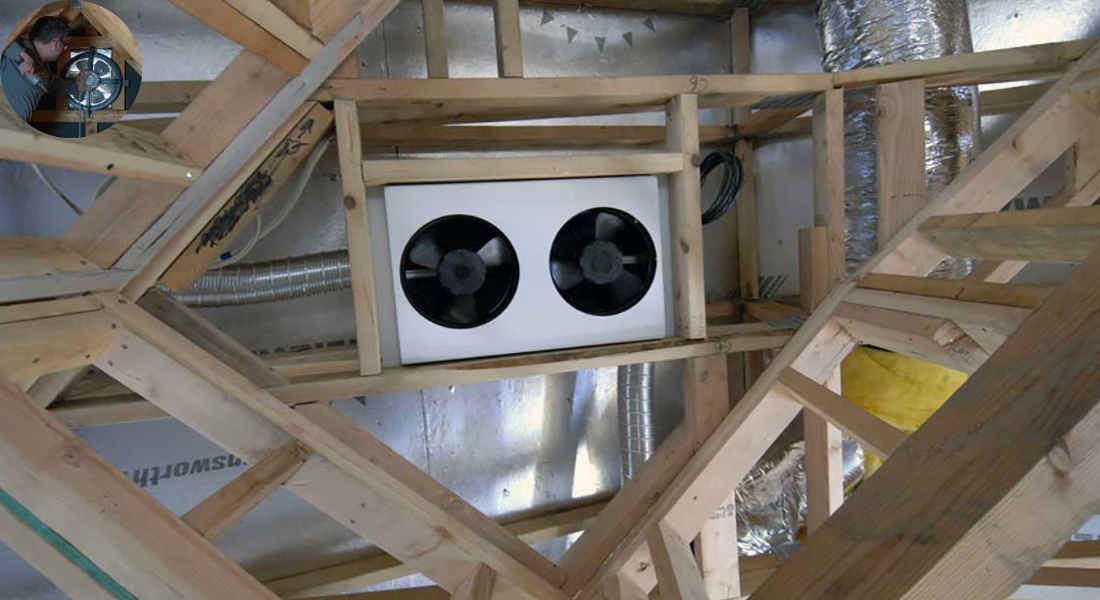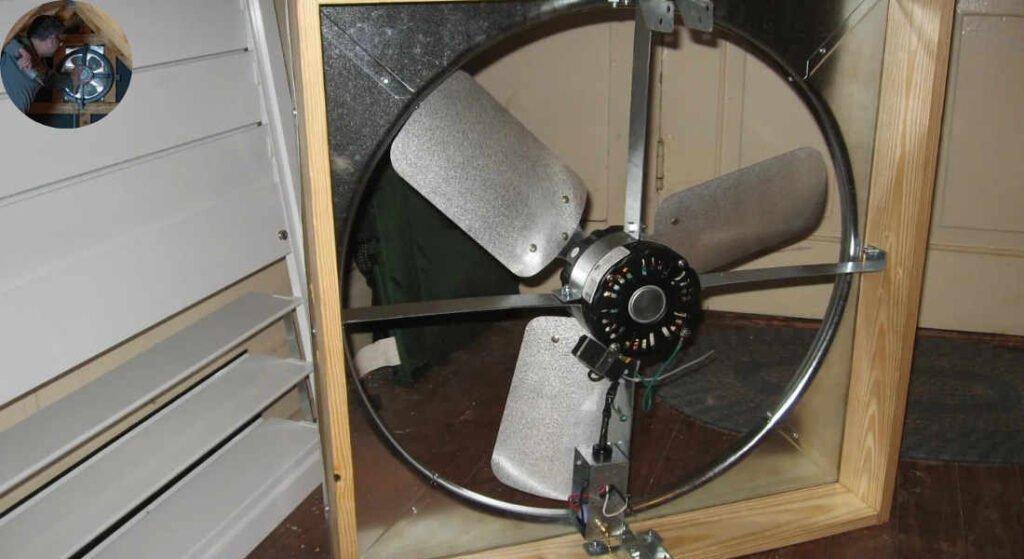When the summer heat hits, keeping your home cool and comfortable can feel like an uphill battle. The sweltering temperatures outside can seep into your home through the roof, turning your attic into a virtual oven. This trapped heat doesn’t just make your house warmer—it forces your air conditioning system to work overtime, driving up energy costs and reducing efficiency.
But what if there was a simple solution to combat this heat and improve your home’s comfort without breaking the bank? Enter the attic fan, a powerful tool designed to regulate attic temperatures and transform your living experience.
Understanding the Basics: What Is an Attic Fan?
Before we dive into how attic fans transform home comfort, it’s essential to understand what an attic fan is and how it functions.
What Is an Attic Fan?
An attic fan is a mechanical ventilation device installed in the attic of a home. Its primary purpose is to remove hot air from the attic space and replace it with cooler air from the outside. This simple yet effective process helps regulate attic temperatures, preventing excessive heat buildup.
Types of Attic Fans
There are two main types of attic fans:
- Electric Attic Fans: These are powered by electricity and are typically more powerful, making them suitable for larger attics.
- Solar-powered attic Fans rely on solar energy, making them an eco-friendly and cost-effective option, especially in sunny regions.
Both types have pros and cons, which we’ll cover later in the article.
Why Ventilation Matters
Attic ventilation is critical in maintaining a comfortable and energy-efficient home. Heat can accumulate in your attic without proper ventilation, reaching temperatures up to 150°F (65°C) during the summer months. This heat doesn’t just stay in the attic—it radiates into your living spaces, making your air conditioner work harder to cool the house.
Installing an attic fan can mitigate this heat buildup, creating a more balanced and comfortable indoor environment.
How Does an Attic Fan Work?
Now that we understand what an attic fan is, let’s take a closer look at how it works to cool your home.
You may also read (does running the dryer really heat up your house).
The Mechanism of an Attic Fan
An attic fan operates by expelling hot air from the attic through vents. As the hot air is pushed out, cooler air from outside is drawn in through intake vents, creating a continuous fresh air flow. This process helps to lower the temperature inside the attic by 10-25°F, depending on the fan’s power and the weather conditions.
Interaction with HVAC Systems
Attic fans don’t just work in isolation; they complement your home’s existing HVAC system by reducing the overall heat load. When the attic is cooler, less heat radiates into your living spaces, so your air conditioner doesn’t have to work as hard to maintain a comfortable temperature. This can result in significant energy savings over time.
Airflow Dynamics
The key to an attic fan’s effectiveness lies in proper airflow dynamics. A well-ventilated attic ensures that hot air is consistently removed while cooler air is brought in to replace it. This balance is essential for maintaining a stable indoor temperature and preventing hot spots.
Does an Attic Fan Cool the House?
This is the million-dollar question: does an attic fan cool the house? The answer is yes and no, depending on how you define “cooling.”
Direct vs. Indirect Cooling
An attic fan doesn’t cool your house directly like an air conditioner. Instead, it works indirectly by removing excess heat from the attic, reducing the heat radiating into your living spaces. This can make your home feel noticeably cooler and more comfortable, especially during the hottest parts of the day.
Temperature Consistency
By reducing attic temperatures, an attic fan helps to create a more consistent indoor temperature throughout your home. You’ll notice fewer hot spots and a generally more comfortable living environment.
Real-Life Examples
Many homeowners report significant improvements in their home’s comfort after installing an attic fan. For instance:
- A homeowner in Texas noticed that their upstairs bedrooms were up to 10°F cooler after installing an attic fan.
- Another homeowner in California saw a 15% reduction in their energy bills during the summer months.
Common Misconceptions
One common misconception is that attic fans can completely replace air conditioning. While an attic fan can reduce your reliance on AC, it works best as a complementary solution rather than a standalone cooling system.
Key Benefits of Installing an Attic Fan
Attic fans offer a wide range of benefits beyond just cooling. Here’s a closer look at why they’re a wise investment for any homeowner.
You may also read (how to change your air filter for a cooler home).
Lower Energy Bills
By reducing the heat load on your air conditioning system, an attic fan can significantly reduce energy consumption. This translates to lower utility bills and long-term savings.
Enhanced Home Comfort
With an attic fan, you’ll enjoy more consistent indoor temperatures, fewer hot spots, and a more comfortable living environment.
Prolonged Roof Lifespan
Excessive heat and moisture in the attic can damage roofing materials over time. An attic fan helps to prevent heat and moisture buildup, prolonging the lifespan of your roof.
Improved Indoor Air Quality
Attic fans also help to reduce humidity, which can prevent the growth of mould and mildew. This leads to healthier indoor air and a safer home environment.
Environmental Impact
Solar-powered attic fans are a sustainable and eco-friendly option that can help reduce your carbon footprint.
Climate Control for Storage
If you use your attic for storage, an attic fan can protect your belongings from heat and moisture damage, ensuring they remain in good condition.
You may also read (does running a furnace fan actually cool your house).

